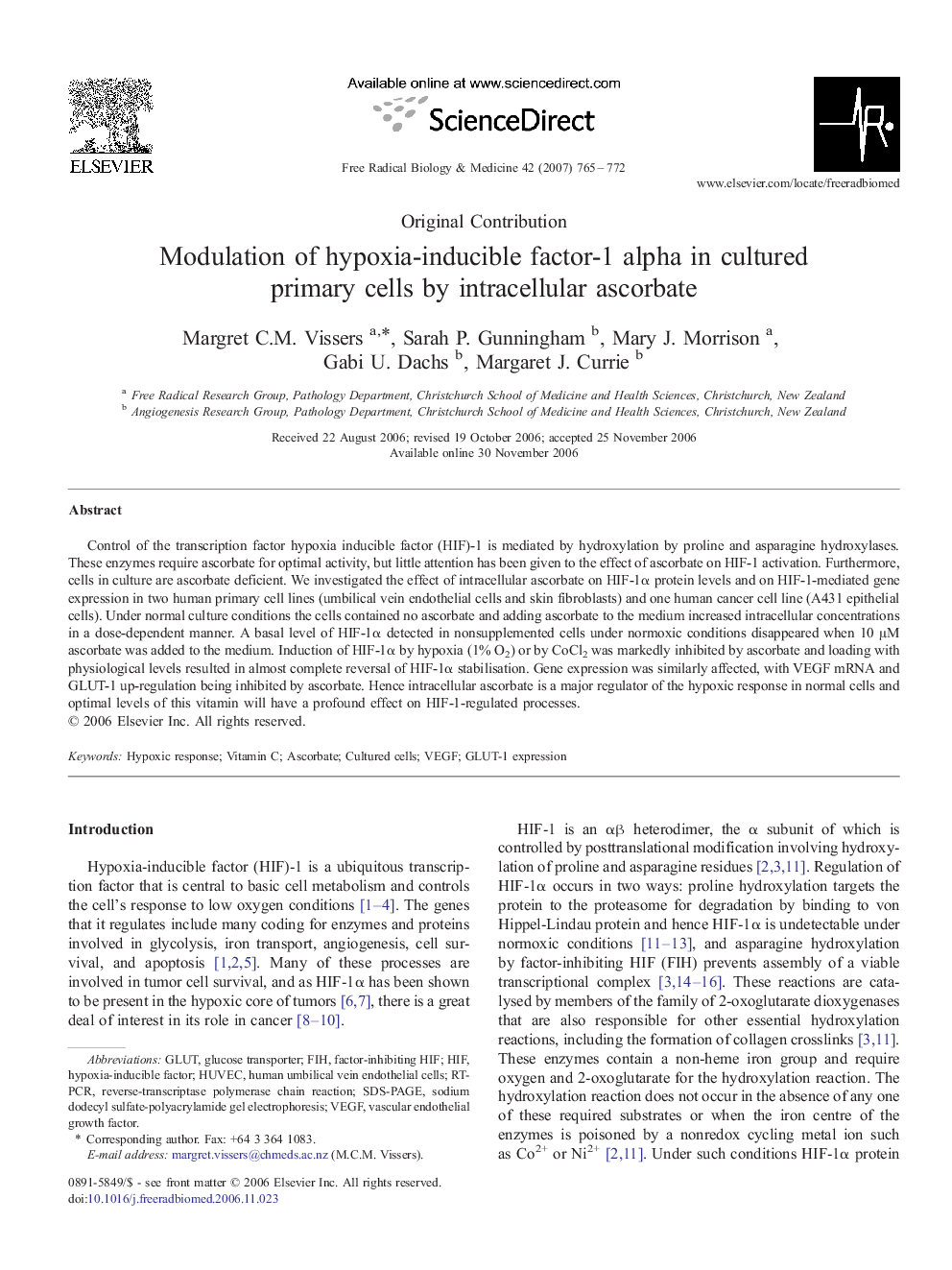| Article ID | Journal | Published Year | Pages | File Type |
|---|---|---|---|---|
| 1910608 | Free Radical Biology and Medicine | 2007 | 8 Pages |
Control of the transcription factor hypoxia inducible factor (HIF)-1 is mediated by hydroxylation by proline and asparagine hydroxylases. These enzymes require ascorbate for optimal activity, but little attention has been given to the effect of ascorbate on HIF-1 activation. Furthermore, cells in culture are ascorbate deficient. We investigated the effect of intracellular ascorbate on HIF-1α protein levels and on HIF-1-mediated gene expression in two human primary cell lines (umbilical vein endothelial cells and skin fibroblasts) and one human cancer cell line (A431 epithelial cells). Under normal culture conditions the cells contained no ascorbate and adding ascorbate to the medium increased intracellular concentrations in a dose-dependent manner. A basal level of HIF-1α detected in nonsupplemented cells under normoxic conditions disappeared when 10 μM ascorbate was added to the medium. Induction of HIF-1α by hypoxia (1% O2) or by CoCl2 was markedly inhibited by ascorbate and loading with physiological levels resulted in almost complete reversal of HIF-1α stabilisation. Gene expression was similarly affected, with VEGF mRNA and GLUT-1 up-regulation being inhibited by ascorbate. Hence intracellular ascorbate is a major regulator of the hypoxic response in normal cells and optimal levels of this vitamin will have a profound effect on HIF-1-regulated processes.
